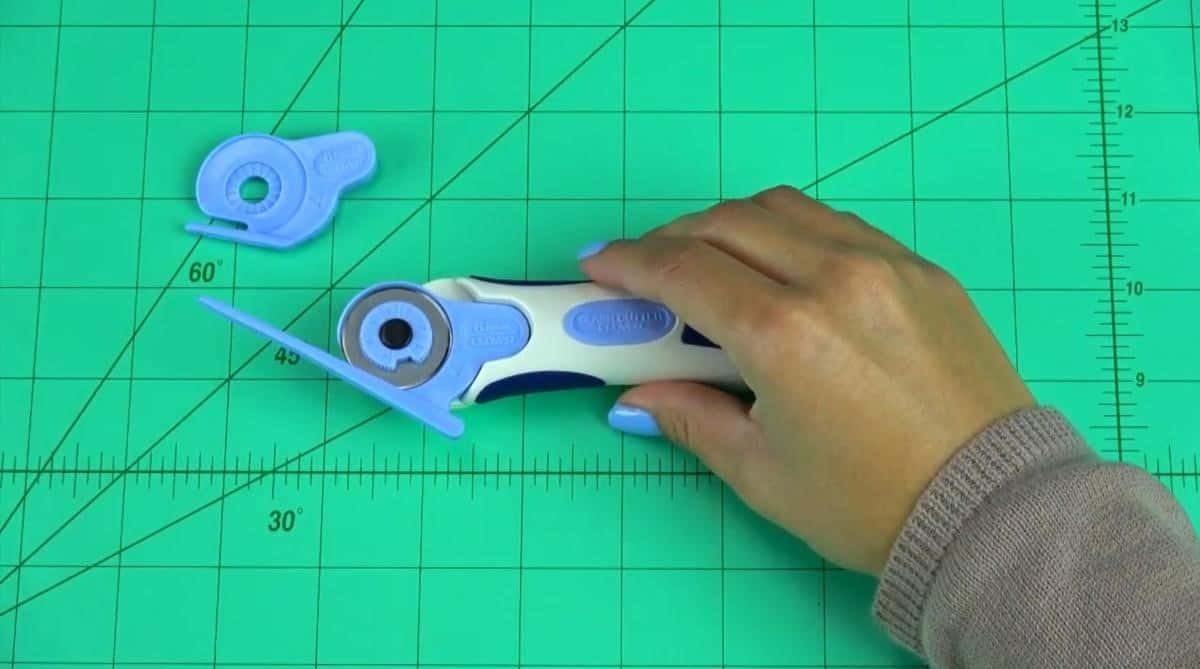Tool School: Slash Cutter
Join us for another session of Tool School where you can learn about our Slash Cutter with a blade that ensures smooth cutting.
What is it?
You know that fuzzy, super comfortable quilt your grandmother gave you? Probably made of chenille. And there’s nothing more reassuring than a hug from a chenille robe. Why? Chenille is your basic comfort fabric.
It’s a natural for towels, robes and baby items. But don’t forget home décor, fashion or crafts. You can make a definite fashion statement with selections from color, pattern or weight. Chenille is a beautiful, textured fabric that is characterized by a unique and inviting 3-D appearance.
It can be purchased ready made by the yard in a variety of solid colors. Of, if you have the perfect colors in mind, you can make it yourself. The cool thing about chenille is that you can add your own creative expression by personally selecting the contrasting multiple layers of frayed fabric with your chosen background fabric.
The result is a potential for creative expression limited only by our own imagination.

Slash Cutter
Art. No 499
What does it do?
Simply put, the Slash Cutter does all of the boring stuff. We get to select the fabric layers and sew the channels and then the Slash Cutter does the rest. It’s important that the cuts be down the center of the channels and that it be easy to accomplish.
To help us do that, the Slash Cutter has three primary components. The handle is designed to comfortably fit in your hand and allows us to easily control the cutter. The round blade easily makes our cuts but does not rotate while cutting.
It does, however, rotate manually when it becomes necessary to advance a new, sharp section of the blade for additional cuts once the current position becomes dull. The last component of the Slash Cutter is the channel guide. The Slash Cutter has two interchangeable guides.
One long and thin to guide the cutting blade directly down the middle of long straight channels producing perfectly even frays. The other is shortened to allow easy manipulation for curving, detailed cuts. In either case we achieve perfect cuts for smooth, even frayed fabric.

So how do we use it?
Whether we’re doing hot pads or bedspreads the process is the same. Engage your creative drive. Select the layers of colors that will form the “frayed” part of your fabric.
Four or more fray colors will work. Place them on your contrasting base fabric, mark lines on the bias in the width and shape that works for you. Sewing along these lines will form the fray channels.
All that’s left to do now is to cut through the top layers between the stitches defining the channels revealing the emerging frayed layers. But cutting is the hard, boring part that also has to be perfect. Returning to the hot pad to bedspread range, keep this in mind. The longer the cuts the more difficult and physically challenging they become.
After all, we want them smooth and even but we don’t want to spend all day doing them. And that’s when the Slash Cutter comes in. It’s the perfect tool to easily take you from laboring to creating and in the shortest possible time.

How do I share it?
People love chenille. They don’t always understand it but they love it. It has that inviting, home spun flavor to it that has a universal appeal.
But most people think it’s more difficult to use than it is and mistakenly avoid it. Make a few samples touching quilting, fashion, home décor or crafts so your friends can see the potential. Then lay out some sample fabrics with the channels already sewn in and allow them to use the Slash Cutter to produce the chenille.
Once they see how easy it is to produce the amazing chenille appearance, they’ll be looking for ways to implement it into their own chosen genre. As always, classes are a great idea. Design a few that are fast and fun. Do some seasonable projects for the holidays. Your creative customers are always looking for those ideas and will readily embrace the Slash Cutter and layers of fabric.

Watch Tool School here:
Sign up for Tool School, our bi-monthly e-newsletter.
Visit our Tool School website!
Stay connected with Clover on Facebook | Twitter | Instagram | Pinterest | YouTube | Ravelry
[mc4wp_form id=”11289″]


